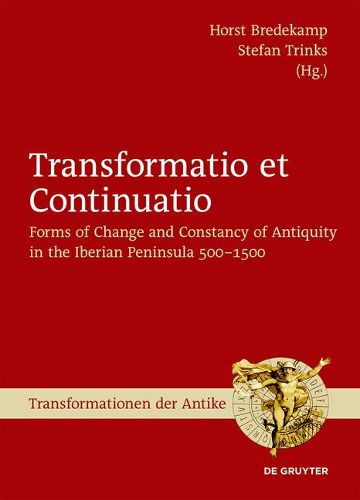Readings Newsletter
Become a Readings Member to make your shopping experience even easier.
Sign in or sign up for free!
You’re not far away from qualifying for FREE standard shipping within Australia
You’ve qualified for FREE standard shipping within Australia
The cart is loading…






This title is printed to order. This book may have been self-published. If so, we cannot guarantee the quality of the content. In the main most books will have gone through the editing process however some may not. We therefore suggest that you be aware of this before ordering this book. If in doubt check either the author or publisher’s details as we are unable to accept any returns unless they are faulty. Please contact us if you have any questions.
Medieval thinkers were convinced that they themselves were still citizens of the empire, which had been founded by Augustus. This book is devoted to substantiate this claim of William Heckscher. It does so by tracing Antiquity’s afterlife in various genres on the Iberian Peninsula. The book is a manifest for a special transformation and, moreover, continuation of antiquity in the so-called Middle Ages in Spain, going against the commonly held view that only the European Renaissance did justice to and came to the rescue of Antiquity. It describes how the Visigoths preserved classical Antiquity in the 6th and 7th century, how Roman influence manifests itself on the Portico de la Gloria of Santiago de Compostela, how the Iberian Peninsula was reluctant to adopt the European Gothic Art around 1200 and how the Catholic Kings went back to forms and ideas of late Antiquity around 1500. In doing so this book offers an alternative to the influential and, so far, widely accepted concept of the reception of Antiquity, which is Erwin Panofky’s Principle of disjunction.
$9.00 standard shipping within Australia
FREE standard shipping within Australia for orders over $100.00
Express & International shipping calculated at checkout
This title is printed to order. This book may have been self-published. If so, we cannot guarantee the quality of the content. In the main most books will have gone through the editing process however some may not. We therefore suggest that you be aware of this before ordering this book. If in doubt check either the author or publisher’s details as we are unable to accept any returns unless they are faulty. Please contact us if you have any questions.
Medieval thinkers were convinced that they themselves were still citizens of the empire, which had been founded by Augustus. This book is devoted to substantiate this claim of William Heckscher. It does so by tracing Antiquity’s afterlife in various genres on the Iberian Peninsula. The book is a manifest for a special transformation and, moreover, continuation of antiquity in the so-called Middle Ages in Spain, going against the commonly held view that only the European Renaissance did justice to and came to the rescue of Antiquity. It describes how the Visigoths preserved classical Antiquity in the 6th and 7th century, how Roman influence manifests itself on the Portico de la Gloria of Santiago de Compostela, how the Iberian Peninsula was reluctant to adopt the European Gothic Art around 1200 and how the Catholic Kings went back to forms and ideas of late Antiquity around 1500. In doing so this book offers an alternative to the influential and, so far, widely accepted concept of the reception of Antiquity, which is Erwin Panofky’s Principle of disjunction.